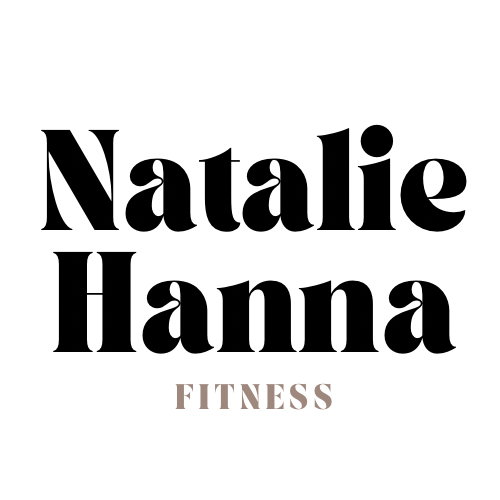Unlocking Athletic Potential in Junior Athletes
- Natalie Hanna Fit

- Feb 15
- 4 min read
Updated: Sep 26
Developing young athletes isn’t just about sport-specific skills—it’s about building a strong, well-rounded foundation that supports speed, strength, coordination, and injury prevention. Whether they play golf, football, tennis, or any other sport, here are six key areas that help them perform at their best.

1. Mobility & Flexibility: The Key to Fluid, Efficient Movement
Mobility is essential for speed, power, and injury prevention in any sport. A lack of mobility can limit movement efficiency and increase injury risk.
Focus Areas:
Hip mobility – Crucial for powerful swings, sprints, and lateral movement.
Thoracic spine mobility – Improves rotation for sports like golf, baseball, and tennis.
Ankle flexibility – Affects balance, agility, and explosive movements.
Best Practices:
Dynamic warm-ups before training (e.g., leg swings, arm circles, thoracic rotations).
Post-session stretching to maintain flexibility.
Mobility drills (e.g., deep squat holds, resistance band stretches) to improve movement quality.
2. Strength & Power: Building a Stronger, Faster Athlete
Strength training for youth athletes shouldn’t focus on muscle isolation—it should develop full-body coordination and power.
Key Training Principles:
🔹 Start with bodyweight mastery – Squats, lunges, push-ups, and pull-ups should come before external loading.
🔹 Prioritise movement over max strength – Lifting heavy is pointless if the athlete can’t squat, hinge, or rotate efficiently.
🔹 Develop explosive power – Medicine ball throws, box jumps, and resisted sprints build speed and rotational force.
Best Strength Exercises for Youth Athletes:
Posterior chain work: Deadlifts, Romanian deadlifts, hamstring bridges.
Core training: Anti-rotation exercises, Pallof presses, hanging leg raises.
Upper body pushing & pulling: Push-ups, pull-ups, overhead carries.
A strong athlete is a durable athlete. Strength training reduces injury risk and builds the foundation for speed and power.
3. Speed, Agility & Coordination: The Edge in Any Sport
Speed and agility separate good athletes from great ones. While golf may not seem like a speed-dependent sport, quickness in rotational movement and stability under dynamic conditions are crucial.
How to Improve Athleticism:
Footwork drills – Ladder drills, cone drills, and lateral shuffles.
Balance & coordination work – Single-leg drills, reaction drills.
Plyometrics – Hurdle hops, bounding drills, explosive jumps.
Why Multi-Sport Athletes Excel
Athletes who only play one sport often develop imbalanced movement patterns and overuse injuries.
Playing multiple sports helps:
Develop explosiveness (e.g., from football, basketball, or track).
Improve hand-eye coordination (e.g., from tennis, baseball, or golf).
Enhance overall endurance, agility, and reaction time.
4. Nutrition & Hydration: Fuelling Performance & Recovery
Young athletes need the right fuel to perform well, recover properly, and stay focused.
Nutrition Priorities:
🥩 Protein – Supports muscle recovery (e.g., chicken, fish, eggs, Greek yogurt).
🍚 Carbohydrates – Provide energy (e.g., rice, potatoes, whole grains, fruit).
🥑 Healthy fats – Support joint health and hormone function (e.g., nuts, seeds, olive oil).
💧 Hydration – Dehydration leads to fatigue and poor concentration.
Game-Day & Training Nutrition:
Pre-game: Slow-digesting carbs + protein (e.g., oatmeal & eggs, chicken & rice).
During training: Water + electrolytes for hydration.
Post-game: Protein + carbs for recovery (e.g., Greek yogurt & fruit, lean meat & sweet potato).
5. Mental Toughness & Focus: Training the Mind Like the Body
Sports are just as much mental as they are physical. Developing resilience, focus, and confidence early on sets young athletes apart.
Ways to Build Mental Strength:
Visualisation – Picture success before competing.
Breath control – Helps manage nerves and stay composed.
Resilience training – Learning from mistakes and handling pressure.
Growth mindset – View challenges as opportunities, not setbacks.
A strong mindset keeps athletes performing under pressure and bouncing back from setbacks.
6. Recovery & Injury Prevention: The Missing Link in Long-Term Success
Overtraining and lack of recovery lead to injuries and burnout. Managing training load, recovery, and growth phases is key to keeping young athletes healthy.
Best Recovery Strategies:
Active recovery – Mobility work, light movement, and stretching.
Adequate sleep – Essential for growth, recovery, and cognitive function.
Strengthening stabilisers – Focus on posterior chain, rotator cuff, and core stability.
Load monitoring – Adjust training based on growth spurts and physical readiness.
Why Early Specialisation Can Hurt Long-Term Development
While sport-specific training is important, over-specialising too early can:
❌ Increase injury risk due to repetitive stress.
❌ Limit overall athleticism and coordination.
❌ Lead to burnout and loss of passion for the sport.
The Best Approach for Young Athletes:
Train general movement skills before sport-specific drills.
Develop full-body strength, speed, and agility.
Play multiple sports to build a well-rounded athletic foundation.
Focus on long-term progress over short-term results.
Final Thoughts: Play the Long Game
Before an athlete can dominate their sport, they need to become a great overall mover. Strength, speed, coordination, and mindset all play a role in long-term success.
Parents, coaches, and athletes should prioritise movement quality, injury prevention, and mental resilience over short-term wins. The best athletes are built over time—not rushed through the process.
🔹 Train smart. Play multiple sports. Build strong, durable athletes. 🔹










Comments